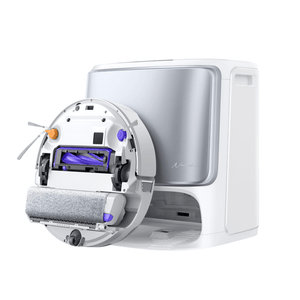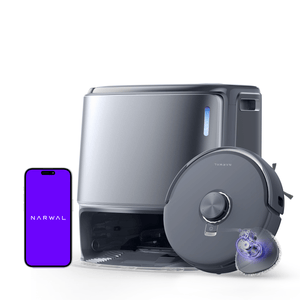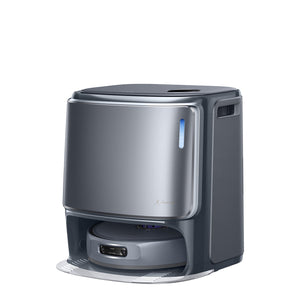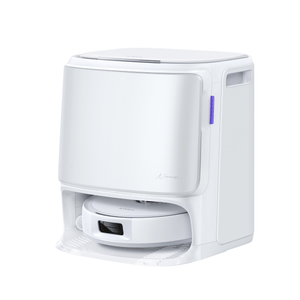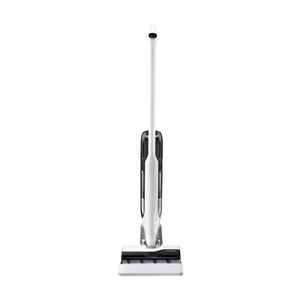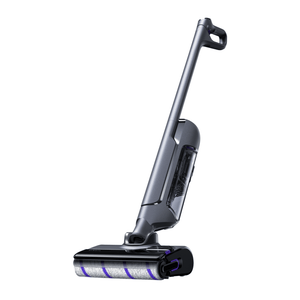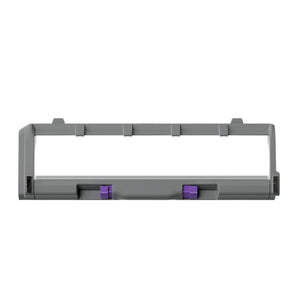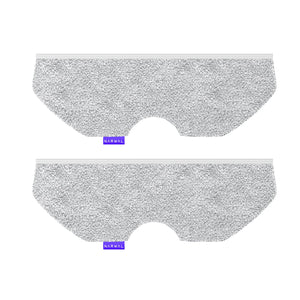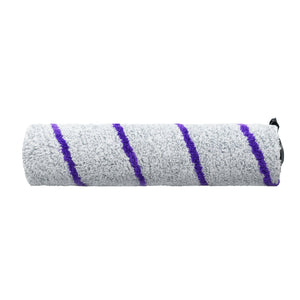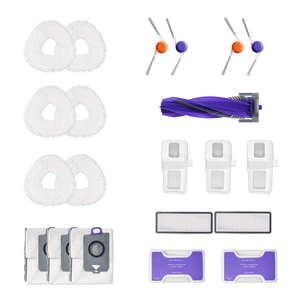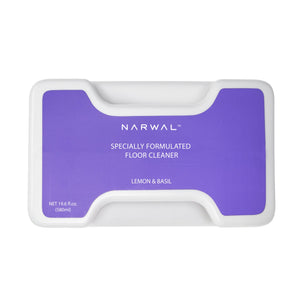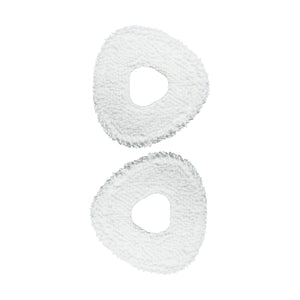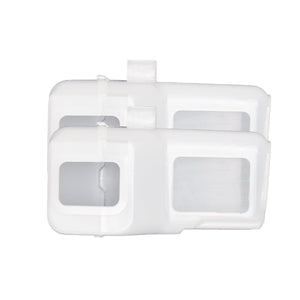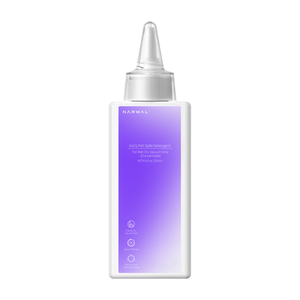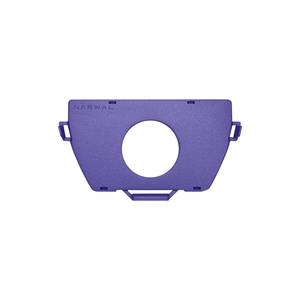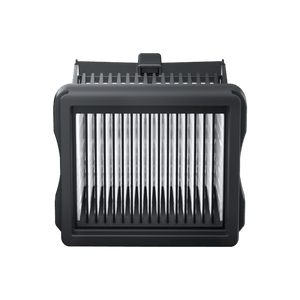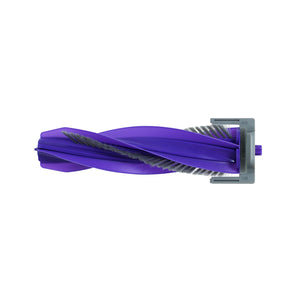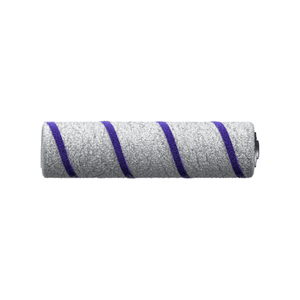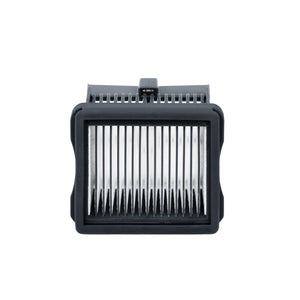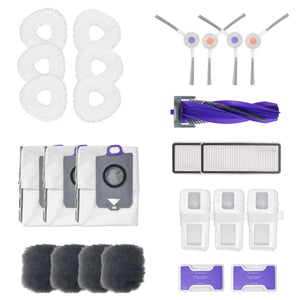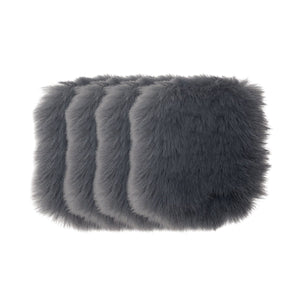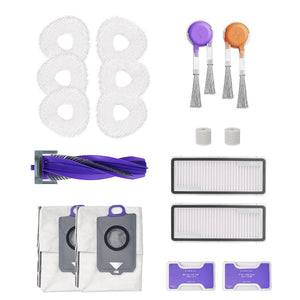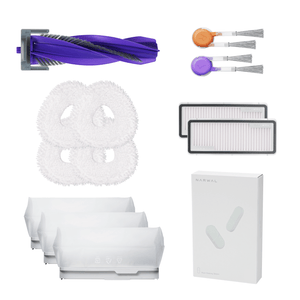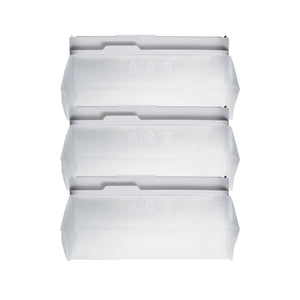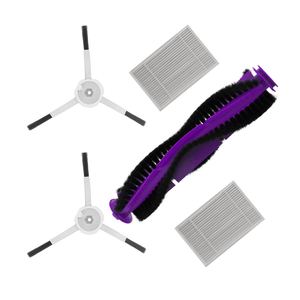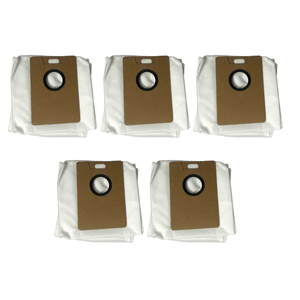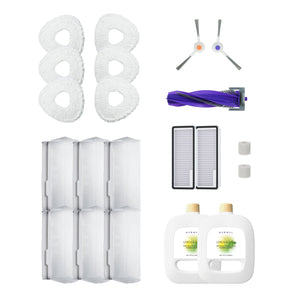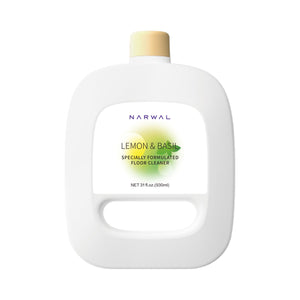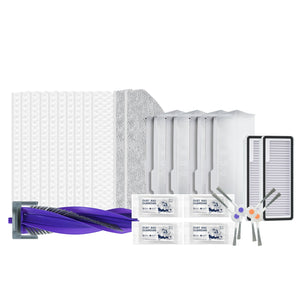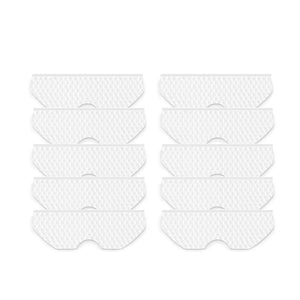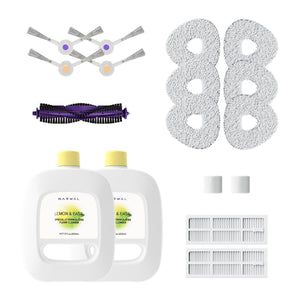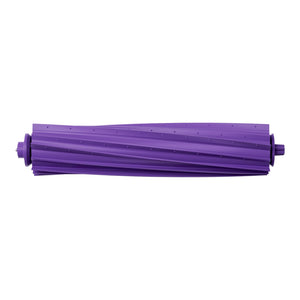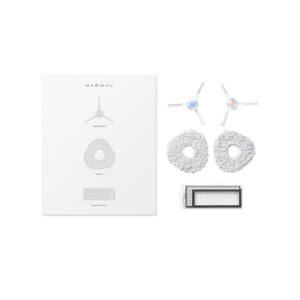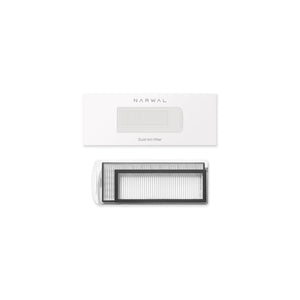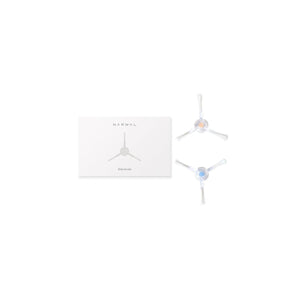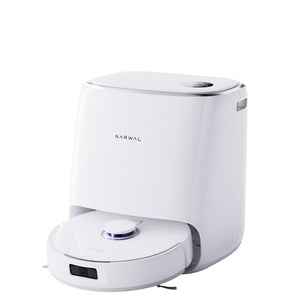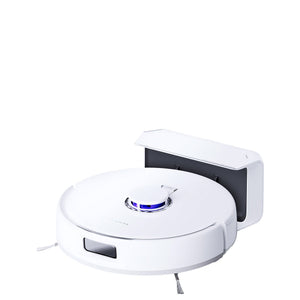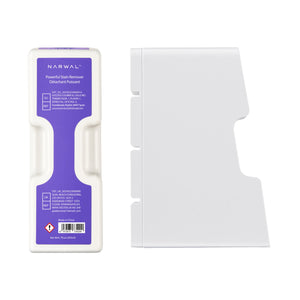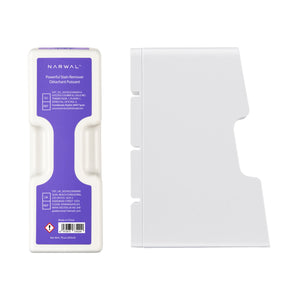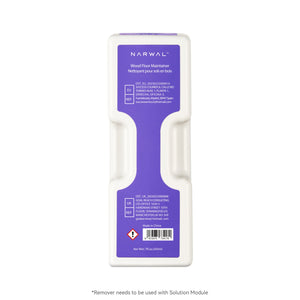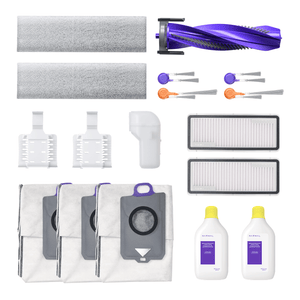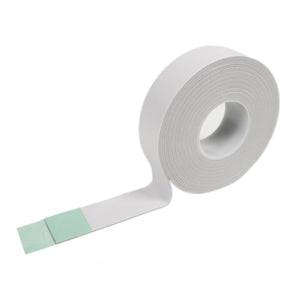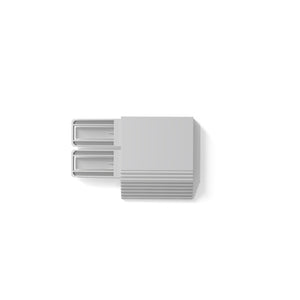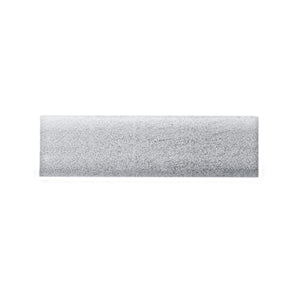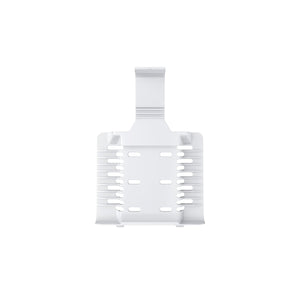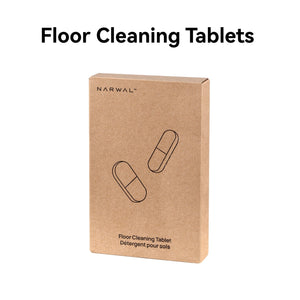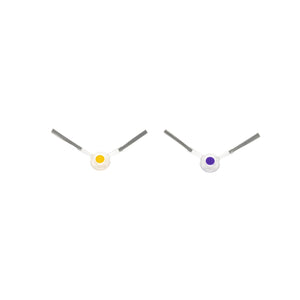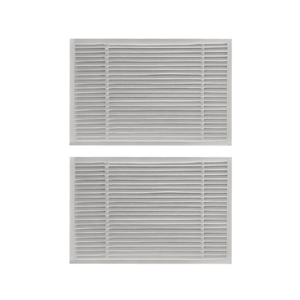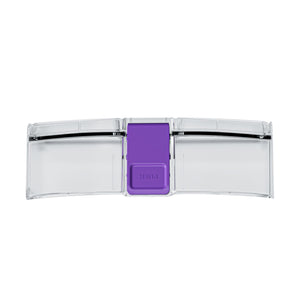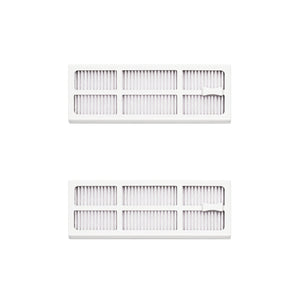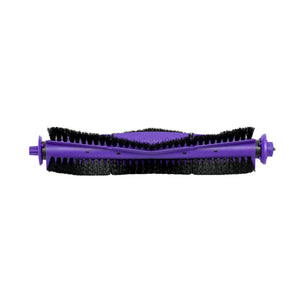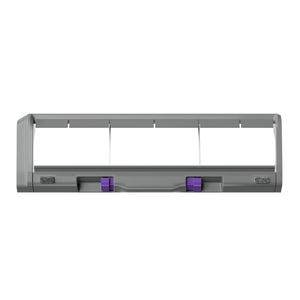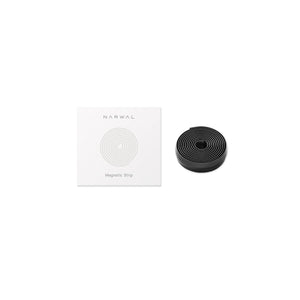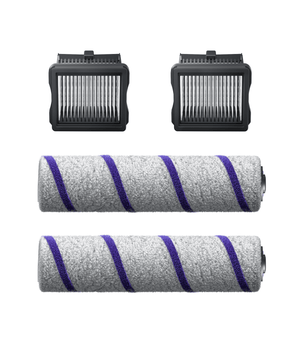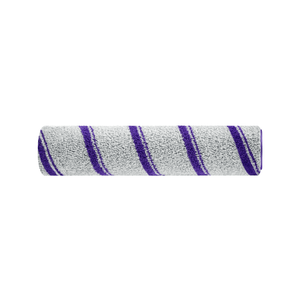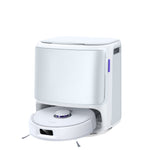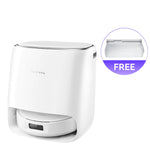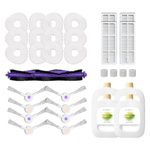Ever wondered if your vacuum really delivers the suction power it promises? Whether you're battling stubborn debris or just curious about performance, measuring suction is the only way to know for sure.
In this guide, you'll learn how to accurately measure your vacuum’s suction power at home using everyday tools like manometers, vacuum gauges, and anemometers. We'll break down the three most reliable metrics—Air Watts, Water Lift, and Pascals—and show you step-by-step how to use each one.
You’ll also learn what affects suction readings (like voltage and humidity), how to interpret your results, and how to spot common measurement mistakes. Let’s get started.
The 3 Key Methods to Measure Vacuum Suction Power
To fully understand your vacuum’s performance, you’ll need to measure more than just how loud it sounds or how clean the floor looks. There are three core ways to measure suction—each with different tools, use cases, and output units.
Air Watts (AW): Total Cleaning Power
Use this when you want to assess overall vacuum performance, combining suction and airflow.
-
What it measures: Suction (Water Lift) × Airflow (CFM)
-
Why it matters: High Air Watts means the vacuum can pick up more debris quickly across large surfaces.
-
Tool needed:
-
Hot-Wire Anemometer or Calibrated Flow Meter → for airflow
-
Manometer → for Water Lift
-
Formula: Air Watts = (CFM × Water Lift) ÷ 8.5
-
Common Range:
-
Light-duty vacuums: 80–120 AW
-
Home use: 150–250 AW
-
High-performance/commercial: 300+ AW
Tip: Don’t confuse high Air Watts with motor wattage—they’re very different!
Water Lift (inches of H₂O): Suction Strength
Use this when you want to know how deep your vacuum can pull debris, especially on carpets.
-
What it measures: How high the vacuum can lift a column of water
-
Why it matters: Shows raw suction force; crucial for deep or embedded dirt
-
Tool needed: Water Manometer or Vacuum Gauge
-
Unit: Inches of water (in H₂O)
-
Common Range:
-
Basic vacuums: 50–70 in
-
High-end vacuums: 80–100 in
Tip: This doesn’t account for airflow, so high Water Lift ≠ fast cleaning!
Pascals (Pa): Vacuum Pressure
Use this when you need precise measurements or work in a controlled environment.
-
What it measures: Vacuum pressure (force of suction)
-
Why it matters: More precise; useful in labs, tech testing, or tight spot cleaning
-
Tool needed: Electrical Pressure Transducer (digital reading in Pa)
-
Unit: Pascals (Pa)
-
Common Range:
-
Mid-range vacuums: 15,000–18,000 Pa
-
High-power vacuums: 20,000+ Pa
Misconception: A vacuum with 22,000 Pa may still clean worse than one with lower Pa but better airflow.
Robot vacuum suction ratings are typically expressed in Pascals (Pa), with common consumer models ranging from around 1,500 Pa to over 3,000 Pa. The actual performance can vary widely depending on how each brand defines and measures robot vacuum Pa values across product lines.
Method Comparison Table
|
Method |
Measures |
Best For |
Tool Needed |
Unit |
Pro Tip |
|
Air Watts |
Suction + Airflow |
Overall cleaning performance |
Flow Meter + Manometer |
AW |
Industry standard, best summary |
|
Water Lift |
Raw suction strength |
Deep carpet / heavy debris |
Manometer or Vacuum Gauge |
in H₂O |
Simple and very visual |
|
Pascals |
Vacuum pressure |
Precision & tech use cases |
Electrical Pressure Transducer |
Pa |
Very precise, but airflow blind |
Which Method Should You Use
-
For overall cleaning performance, use Air Watts. It reflects both suction and airflow.
-
To assess deep suction strength, especially for carpets, use Water Lift.
-
For precise pressure readings in controlled environments, use Pascals.
Common Pitfalls When Comparing Methods
-
Avoid mixing units: 18,000 Pa does not equal 180 Air Watts.
-
Do not rely on a single metric. High suction with low airflow can still result in poor cleaning.
-
Use at least two different methods to get a complete view of your vacuum’s performance.

Tools for Measuring Vacuum Suction Power
To accurately measure your vacuum's suction performance, it's important to use the right tools. While some of these instruments are designed for professional use, several are affordable and practical for home testing. Below is a breakdown of the most common tools, what they measure, and how they apply to different levels of testing.
Tool Comparison Overview
|
Tool |
Measures |
Best For |
Cost |
Accuracy |
Suitable for Home Use |
|
Manometer |
Water Lift (in H2O) |
Home suction testing |
Low |
Moderate |
Yes |
|
Vacuum Gauge |
Pressure |
Quick leak checks |
Low |
Moderate |
Yes |
|
Pressure Transducer |
Pascals (Pa) |
Lab-grade precision |
High |
High |
Rarely |
|
Hot-Wire Anemometer |
Airflow (CFM) |
Estimating Air Watts |
Medium |
Moderate |
Yes |
|
Calibrated Flow Meter |
Airflow (CFM) |
Professional airflow test |
High |
High |
Optional |
Manometer
A manometer measures how high your vacuum can lift water, which reflects its suction strength (Water Lift). It’s one of the simplest and most affordable ways to measure suction at home. Basic models can be found online and are easy to set up with minimal technical experience.
Recommended for: Anyone who wants to know if their vacuum still maintains good suction.
Tip: Ensure airtight connections during measurement to avoid false readings.
Vacuum Gauge
A vacuum gauge helps you measure vacuum pressure in the system and is especially useful for identifying performance drops or potential air leaks. It often reports in inches of water or Pascals.
Recommended for: Diagnosing suction loss or validating system sealing.
Tip: Look for gauges that support dual units if you plan to test both Water Lift and Pa.
Pressure Transducer
An electrical pressure transducer offers high-precision digital readings, usually in Pascals. This tool is ideal for controlled testing environments or vacuum component manufacturing.
Recommended for: Professionals or technicians who require precise data.
Note: Not typically practical for casual or home users due to cost and complexity.
Hot-Wire Anemometer
This device measures the speed of airflow (in CFM), which is a critical input for calculating Air Watts. It can help determine how much air your vacuum is able to move during operation.
Recommended for: Home users wanting to estimate cleaning power using Air Watts.
Tip: Take several readings at the vacuum inlet to improve accuracy.
Calibrated Flow Meter
Flow meters are used for high-accuracy airflow measurement and are often found in professional lab or industrial settings. While precise, they are more expensive and not essential for general testing.
Recommended for: Commercial use, product testing, or quality control.
Note: Not necessary for most home diagnostics.
If you're a home user, start with a manometer for Water Lift and a basic hot-wire anemometer for airflow. These tools combined allow you to estimate your vacuum’s Air Watts and assess suction strength without investing in lab-grade equipment.
Estimated Setup Cost: Around $60 for both tools, providing reliable insights into vacuum performance at home.
Using Air Watts to Measure Suction Power
Air Watts is a combined measure of both suction power and airflow. To measure Air Watts, you need to gather two key pieces of data: CFM (Cubic Feet per Minute) and Water Lift. Here’s a clearer step-by-step process:

Step 1: Measure the Airflow (CFM)
The first step is to measure the airflow (CFM), which is the volume of air the vacuum can move in one minute. This is typically measured in Cubic Feet per Minute (CFM).
-
Tool used: Hot Wire Anemometer or a Calibrated Flow Meter.
- How to measure: Place the anemometer or flow meter at the vacuum’s suction inlet (usually where the hose connects). The device will measure how much air the vacuum is drawing in.
Why it matters: High airflow (CFM) is crucial for cleaning larger areas quickly, as it indicates how much air the vacuum can move, allowing it to pick up dust and debris more efficiently.
Step 2: Measure the Water Lift
Next, measure the Water Lift, which tells you about the vacuum’s suction strength. Water Lift measures how high the vacuum can lift a column of water, and it indicates how much suction force the vacuum is generating.
-
Tool used: Manometer or Vacuum Gauge.
-
How to measure: Attach the manometer to the vacuum’s suction port. The manometer will show how high the water column is lifted as the vacuum operates.
Why it matters: A higher Water Lift means stronger suction, allowing the vacuum to pull debris from deeper surfaces, such as carpets or cracks.
Step 3: Calculate Air Watts
Now that you have both CFM (airflow) and Water Lift (suction strength), you can calculate Air Watts using the following formula:
Air Watts = CFM × Water Lift ÷ 8.5
For example, if a vacuum has a CFM of 100 and a Water Lift of 100 inches, the Air Watts would be:
Air Watts = 100 × 100 ÷ 8.5 = 1176.47
Why it matters: Air Watts is a combined measure of suction strength (Water Lift) and airflow (CFM). A higher Air Watts value indicates better overall cleaning power, meaning the vacuum can pick up more debris and clean more efficiently.
Using Water Lift to Measure Suction Power
Water Lift is a key metric that measures the strength of your vacuum’s suction by how high it can lift a column of water. It tells you about the vacuum’s pulling force. Here's a step-by-step breakdown:

Step 1: Set Up the Manometer
To measure Water Lift, you’ll need a Manometer or Water Manometer. These devices are designed to measure the vacuum’s suction by observing how high a column of water can be lifted.
-
Tool used: Manometer (preferably a water manometer for more accurate readings).
-
How to set up: Attach the manometer to the vacuum's suction port or hose. Ensure it’s secure so that there are no air leaks during the test.
Step 2: Turn On the Vacuum
Once the manometer is connected, turn on the vacuum and let it stabilize for a moment. You want to allow the vacuum to reach a steady operating condition before taking the measurement. This ensures that you're getting an accurate reading of the vacuum’s performance.
Step 3: Measure the Water Lift
As the vacuum operates, the water manometer will show you how high the water column rises. This height is your Water Lift value. Higher readings indicate stronger suction. A higher Water Lift means your vacuum has a stronger suction force. It’s especially important for deeper cleaning tasks, like pulling dirt from carpets or upholstery.
Step 4: Interpreting Results
The Water Lift value is typically measured in inches of water. The higher the value, the more powerful the suction.
For example, if your manometer shows a water lift of 100 inches, this indicates that the vacuum has a strong suction force. This is ideal for deep cleaning tasks.
Using Pascals (Pa) to Measure Suction Power
Pascals (Pa) measure vacuum pressure, which is another important factor in suction performance. This method provides an accurate reading of suction strength. Here's how to use Pascal values to measure suction power:

Step 1: Attach the Electrical Pressure Transducer
To measure suction pressure in Pascals, you will need an Electrical Pressure Transducer. This tool converts vacuum pressure into an electrical signal, which is then displayed digitally.
-
Tool used: Electrical Pressure Transducer.
-
How to set up: Attach the pressure transducer to the suction port or hose of your vacuum.
Step 2: Turn On the Vacuum
After the transducer is properly connected, turn on the vacuum and let it stabilize.
Like with other tests, the vacuum should run for a moment to stabilize and provide an accurate reading.
Step 3: Read the Measurement
The transducer will convert the pressure into a digital reading in Pascal (Pa). The higher the number, the stronger the suction pressure.
Higher Pa values indicate a vacuum with stronger suction power. This is important for tasks requiring fine precision, like cleaning tight spaces or deeply embedded dirt.
Step 4: Interpreting Results
Higher Pascal readings mean greater suction power. This method is great for precision cleaning because it shows how much force the vacuum is generating.

Factors That Can Affect Suction Measurement Accuracy
Even if your vacuum is in good working condition, certain environmental and system variables can cause inaccurate suction readings during testing. Understanding these factors can help you get more reliable and consistent results.
Voltage Fluctuations
Suction strength depends heavily on the power supply. If you're testing a cordless vacuum with a partially depleted battery, or using a unit connected to an unstable voltage source, your suction readings may appear lower than they actually are.
What to do: Make sure your vacuum is fully charged or connected to a stable outlet before running any measurements.
Altitude and Air Pressure
Higher altitudes have thinner air, which reduces the available atmospheric pressure. This can lead to lower Water Lift and Pascal readings—even if the vacuum’s performance is fine.
What to do: If you're testing at high elevations, focus on relative comparisons rather than raw values, and check for consistent sealing to compensate.
Air Temperature and Humidity
Hot or humid air affects air density, which can alter airflow and suction measurements. In extreme conditions, suction motors may also behave differently.
What to do: For best results, test in a room-temperature environment (around 20–25°C / 68–77°F) with moderate humidity.
Airflow (CFM)
A vacuum may generate high suction pressure but still underperform if airflow is restricted. Dust buildup, clogged filters, or narrow hoses can all limit airflow, skewing Air Watts calculations.
What to do: Always clean filters and hoses before testing, and make sure there’s no obstruction at the inlet.
System Sealing Quality
Leaks anywhere in the vacuum system—such as loose hose connections, cracked casings, or poorly seated filters—will reduce suction and distort your readings.
What to do: Inspect all seals and connections before testing. A quick way to check is by covering the inlet and listening for whistling sounds or air escape.
In some cases, suction loss is not just a result of measurement error but long-term wear or mechanical degradation, which is more common in robot vacuums after extended use such as dust buildup, seal fatigue, or motor decline.
To get the most accurate suction power readings, always test under consistent conditions: a clean system, a stable power supply, and a sealed environment. Small environmental changes can impact your numbers, but with good preparation, your measurements will be far more reliable.
FAQs
How do I know if my vacuum is losing suction?
A drop in performance often shows as reduced pick-up on carpets or poor airflow. To confirm, measure the vacuum’s Water Lift or Air Watts and compare to its original specs. A significant drop suggests clogging, leaks, or filter issues.
Can I measure suction without special tools?
Yes, roughly. You can try the “sealed hand test” — cover the hose with your palm and feel the pull. For more accurate readings, a basic manometer (~$20) and anemometer (~$30) offer measurable results at home.
What’s a good Air Watts range for robot vacuums?
Robot vacuums typically range between 100–150 Air Watts. Models with over 150 AW offer stronger cleaning performance on carpets or pet hair. Always compare Air Watts alongside navigation and brush features.
What is the difference between suction power and airflow?
Suction power combines both suction pressure (measured in Pa or Water Lift) and airflow (measured in CFM). Airflow alone doesn’t reflect how well a vacuum lifts debris. For deep cleaning, both must be strong.
Does a higher wattage vacuum mean stronger suction?
Not always. Wattage refers to electrical consumption, not performance. A vacuum can use more watts but still have poor suction if its design limits airflow or pressure. Air Watts is a better performance metric.
How much suction power do most vacuums have?
-
100–200 Air Watts: Standard for most household vacuums
-
200–300 AW: Ideal for deep carpet cleaning
-
300+ AW: Professional/commercial-grade models
What’s the best metric to compare suction between vacuums?
Use Air Watts when possible, as it reflects both airflow and suction force. If unavailable, combine CFM and Water Lift readings for an estimate.
Final Thoughts
Measuring vacuum suction isn’t just for engineers—it’s a practical way to evaluate and maintain cleaning performance at home. Whether you’re comparing models or checking an old vacuum, having real data makes a big difference.




